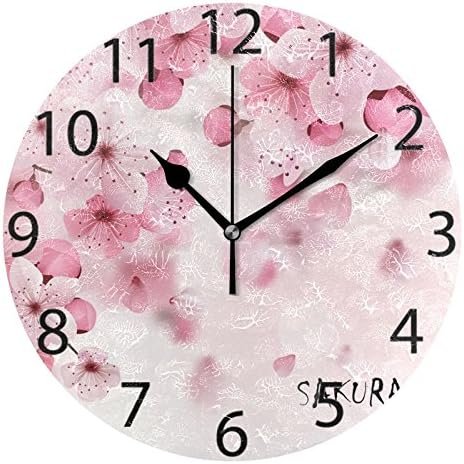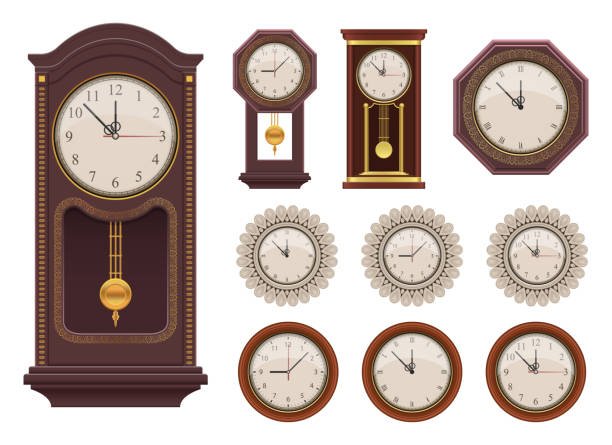Collecting Japanese clocks can be a rewarding hobby that combines an appreciation for fine craftsmanship and history. Whether you’re drawn to their intricate designs or their technological innovations, Japanese clocks offer a unique perspective on timekeeping. This guide provides tips for new collectors, helping you navigate the world of Japanese clocks and build a meaningful collection.
Understanding Japanese Clocks
A Brief History
Japanese clocks, known as wadokei, have a rich history that dates back to the 17th century. Initially influenced by Western mechanical clocks introduced by Dutch traders, Japanese artisans developed their own versions with a distinct cultural flair. These clocks often featured traditional Japanese aesthetics, such as lacquered wood cases and intricate carvings.
In addition to their visual appeal, Japanese clocks also demonstrate the country’s technical evolution, transitioning from early mechanical models to quartz timepieces in the modern era. Collecting these clocks allows you to explore this blend of artistry and innovation.
Types of Japanese Clocks
When starting your collection, it’s important to familiarize yourself with the different types of Japanese clocks available. Some popular types include:
- Mechanical Clocks: Early Japanese mechanical clocks, such as the wadokei, used seasonal timekeeping systems, with varying lengths for day and night.
- Wall Clocks: Often featuring traditional Japanese designs, these clocks became popular during the Edo period.
- Quartz Clocks: Modern Japanese clockmakers like Seiko revolutionized timekeeping with the introduction of quartz clocks in the late 20th century.
Knowing the types of clocks helps you make informed choices as a collector.
Tips for Starting Your Collection
Research Before Buying
Before purchasing your first Japanese clock, it’s essential to do thorough research. Learn about the different eras, styles, and makers of Japanese clocks. Understanding the history and significance of each piece will help you identify authentic timepieces and avoid common pitfalls.
Online forums, collector groups, and books on Japanese horology are excellent resources for deepening your knowledge. The more you know, the better equipped you’ll be to spot valuable clocks and avoid counterfeits.
Start with a Focus
When starting out, consider focusing your collection on a specific type or era of Japanese clocks. For example, you might choose to collect antique wall clocks from the Edo period or focus on vintage quartz clocks from the mid-20th century. Specializing allows you to develop expertise in a particular niche and make more informed purchasing decisions.
Budget Wisely
It’s easy to get carried away when building a collection, but it’s important to set a budget. Japanese clocks vary widely in price, with antique and rare pieces often fetching high prices. Start with clocks within your budget, and gradually expand your collection as your expertise grows.
Keep in mind that you may need to budget for restoration and maintenance costs as well. Some antique clocks may require repairs or cleaning, and having them professionally restored can increase their value.
Where to Find Japanese Clocks
Antique Shops and Auctions
Antique shops and auctions are excellent places to find authentic Japanese clocks. Many dealers specialize in antique timepieces and can provide you with information about the clock’s history and provenance. Auctions, both online and in person, offer opportunities to acquire rare or unique pieces, but be prepared to bid strategically.
Online Marketplaces
Online marketplaces such as eBay and specialized clock websites offer a wide variety of Japanese clocks. While convenient, buying online requires caution. Ensure the seller has good reviews and offers detailed descriptions and photos of the clock. Always ask for additional information or images if needed, especially when purchasing high-value items.
Collectors’ Groups
Joining collectors’ groups and forums can connect you with experienced collectors who can provide valuable advice. These groups often hold events, share resources, and offer buying and selling opportunities. Networking with fellow collectors is an excellent way to learn about reputable sellers and gain insights into the market.
Identifying Authentic Japanese Clocks
Check for Maker’s Marks
Many Japanese clockmakers, such as Seiko, Citizen, and Rhythm, leave maker’s marks on their timepieces. These marks are often found on the clock face, movement, or case. Identifying the maker’s mark can help you determine the clock’s origin and authenticity.
Examine the Materials
Authentic Japanese clocks are often made from high-quality materials such as lacquered wood, brass, or bronze. Pay attention to the craftsmanship, including details like engravings, carvings, and finishes. Cheap materials or sloppy workmanship can indicate a reproduction or counterfeit.
Research the Movement
The clock’s movement is one of the most important aspects to examine. Antique mechanical clocks will have intricate movements, often made from brass or steel, while quartz clocks have modern electronic movements. Studying the clock’s movement can give you clues about its age and authenticity.

Caring for Your Collection
Regular Maintenance
Clocks, especially antique ones, require regular maintenance to keep them in working condition. Mechanical clocks should be cleaned and lubricated every few years by a professional clockmaker. Quartz clocks require battery replacements and occasional cleaning of the internal components.
Proper Display and Storage
When displaying your collection, choose a location away from direct sunlight, humidity, and extreme temperature changes. These factors can damage both the clock’s movement and its exterior. For valuable or antique clocks, consider investing in a display case to protect them from dust and accidental damage.
Conclusion
Collecting Japanese clocks offers a fascinating journey through history, art, and technology. By doing thorough research, focusing your collection, and taking proper care of your timepieces, you can build a valuable and meaningful collection. As you continue your collecting journey, you’ll discover the timeless appeal and cultural significance of these remarkable clocks.





Auch wenn jedes Casino eine Reihe der beliebtesten Casinospiele anbietet, die den größten Teil des Casinogewinns
ausmachen, und diese Auswahl ausreichend zu sein scheint,
schätzen die Spieler dennoch die Auswahl. Eine wichtige Frage, die
man sich also Spieler stellen sollte, ist die, was ein gutes Casino ausmacht und warum bestimmte
Casinos die besten in Deutschland sind und in unserem CasinoMeta™ Ranking am besten abschneiden. Online-Casinos müssen lizenziert sein,
was ein Zeichen dafür ist, dass der digitale Service Anbieter an Gesetze gebunden ist
und sich an diese halten muss, sonst riskiert dieser eine Geldstrafe und einen Lizenzentzug.
Der Vorteil beim Spielen in lizenzierten Casinos ist, dass Sie dort rechtliche
Sicherheit genießen und Ihr Geld im Streitfall einklagen können. Achten Sie darauf, dass die Konten der Zahlungsanbieter
und Ihr Casino Konto unter dem gleichen Namen geführt werden, um Probleme bei der Gewinnauszahlung zu vermeiden.
Die Fairness und Sicherheit der Glücksspiele um echtes
Geld im Internet sind endlich staatlich garantiert.
Der Glücksspielstaatsvertrag (GlüStV) in Deutschland regelt
die Online Casinos und das Angebot für virtuelle Automatenspiele.
Es dürfte aber nicht mehr lange dauern, bis auch die Online Casinos
in Schleswig-Holstein online sein werden. Denn wer wirklich top sein will, muss sich ständig
weiterentwickeln! Die hier vorgestellten Online Casinos und Internet
Spielotheken sind unsere besten Seiten für Spieler in Deutschland.
Live Casino Spiele bieten eine einzigartige und immersive
Erfahrung in Online Casinos. Ein bestes Online Casino
zeichnet sich durch eine Kombination aus hohen Sicherheitsstandards, einem breiten Spektrum
an Casino Spielen und ausgezeichneten Kundenbewertungen aus.
Die Suche nach dem besten Online Casino in Deutschland erfordert eine detaillierte
Betrachtung verschiedener Faktoren wie Spielangebot, Kundenbetreuung und Bonusangebote.
Online Casinos in Deutschland bieten Ressourcen für verantwortungsvolles
Spielen an. Die beste Zahlungsmethode für Online Casinos
hängt von den Bedürfnissen und Vorlieben des Spielers ab.
References:
https://online-spielhallen.de/nine-casino-deutschland-ihr-umfassender-leitfaden/
All supported options accept AUD, so you won’t lose money
on currency conversion. Making a deposit is simple — once
logged in, you can head to the Payments section and choose
from methods like Visa, Mastercard, POLi, bank transfer, or e-wallets.
However, online gambling regulations can vary between states, so it’s
important to check your local laws before signing up.
You’re not alone, and talking to someone can make a real difference.
If you feel gambling is becoming a problem, help is available.
Recognising the early signs — such as chasing losses or
hiding your gambling habits — is the first step to staying safe.
Leon Casino Australia allows one personal account per player.
The site follows Responsible Gambling principles and offers tools for limits, time tracking and self-exclusion. Leon Casino Australia supports all main payment
options used by Australians.
References:
https://blackcoin.co/the-star-gold-coast-ultimate-casino-guide/
Instead of sitting on your Bitcoin, Ethereum,
Dogecoin, Ripple, and Shiba Inu tokens, you could also take them to a crypto casino in Australia.
Let us assume that you have been in the game for long enough to know
which flavours of ice cream you love the most.
There really is a lot to uncover here, and we look forward to standing side
by side with you as you go through it! We will tell you all that you need
to know about top pokies, their RTPs (return to player), volatility, and features.
Online.casino features plenty of articles explaining the ins and outs of different slot strategies.
These attempt to replicate the feel of a physical casino table and
are streamed in real time. The game’s pace is fast, and
the rules are simple; you can bet on the banker, the
player, or a tie. There’s less swiping and more control, which is really useful if you’re checking out promo details or toggling between live dealer
rooms. The top platforms all load fast, keep it simple, and let you jump between games without any lag.
Being on the casino floor, watching the dealers, and seeing the games in action gives you a
different perspective that online platforms can’t fully replicate.
As someone who prefers to play in person, I’m not ashamed
to say that I’ve visited almost every online casino under the sky in Australia (especially during my peak poker days).
That aside, I completely understand the appeal behind online gambling sites, and when put side-by-side, it even makes more sense to play online.
We’re talking about roulette, blackjack, baccarat, real money poker, and various card games.
References:
https://blackcoin.co/casino-wharf-fx-a-comprehensive-overview/
paypal casinos online that accept
References:
https://recruit.brainet.co.za/
online pokies australia paypal
References:
systronics.co.kr